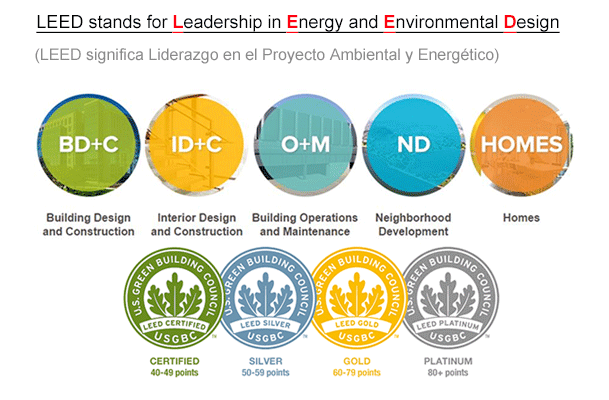What does “green data center” mean and who assigns such a title to a data center?
According to the representative of the board of the Swedish company Einstok AB, David Sarden, during the Third Climate Forum of cities at the end of 2018, there were about 9 million data centers in the world, which in turn consume almost 3% of all electricity generated by mankind. And such indicators continue to grow over the years. That is why, in order to protect our ecology and the planet as a whole, “green data centers” are becoming more and more popular.
There is no clear definition of a green data center. But in a nutshell, this category includes data centers that are based on renewable energy sources, due to which they have a minimal negative impact on the environment.
It goes without saying that it is impossible to independently claim the title of "green" data center. Today there are several systems for certification of energy efficiency of data centers and the most popular among them is The Leadership in Energy & Environmental Design (LEED).
What is LEED certification and how do I get it?
LEED is a voluntary certification system that aims to create a uniform and accurate standard for green buildings. It is LEED that is considered the most authoritative certification system in the field of green building.
LEED certification is awarded based on the assessment of six main criteria for the operation of the data center (for each of which you can collect a certain amount of points):
- integration process (2 points);
- location and transport (18 points);
- water use efficiency (12 points);
- energy and atmosphere (38 points);
- materials and resources (13 points);
- the quality of the internal environment (17 points);
- design process innovation (6 points) and regional priorities (4 points).

The final grade is the sum of points for each of the criteria. Based on this, there are four possible levels of certification:
- platinum (over 80 points);
- gold (more than 60 points);
- silver (more than 50 points);
- and bronze (more than 40 points).
So, only 148 data centers in the world have the highest level of LEED certification (platinum and gold): 117 were awarded gold status and only 31 - platinum. And now we will look at the most unusual "green" data centers.
Equinix AM3 Data Center

This data center is located in the science park of Amsterdam and is considered one of the most environmentally friendly in the world. Equinix AM3 uses not just innovative technologies, but technologies from the field of astronautics (for example, fuel cells that are capable of generating energy from hydrogen and methane). Also, a "green" cooling system is used (water from an artesian well is used for cooling).
Facebook data center

Also, the data center of Facebook in the Arctic belongs to the "green" data centers of the world. The building is located 60 km from the Arctic Circle at the confluence of the Lule River, namely in the Gulf of Bothnia. The engineers inside the data center use only the energy that is obtained from the hydroelectric power plant. Thanks to this, the specialists of the Facebook data center managed to reduce the number of spare generators by almost 70%.
Facebook's data center also boasts an energy efficiency (PUE) ratio of just 1.07, one of the lowest in the industry.
Apple's "wind" data center
The next "green" data center is located in Maiden, North Carolina and is owned by Apple. The climate of the local region is considered quite harsh, which is why the data center operates on wind energy. The construction of our own wind turbines increases the cost of the project by an order of 6-10%, but the investment pays off after 4 years. The own wind farm allows to produce 244 million kilowatt-hours of energy from renewable sources per year. By comparison, this is equal to the energy consumption of about 17,906 homes in North Carolina.

Apple Data Center Campus (USA)

Apple's data center campus, which is located near the city of Maiden (USA), is actively using solar energy. The work of the data center is based on the energy that is produced by two solar farms at once, with an area of 40 hectares each. Next to the farms, there are fuel cell arrays that generate electricity using biogas. The most interesting thing is that this gas is obtained in the process of processing waste from nearby landfills.
Thus, one solar farm is capable of generating 42 million kilowatt * hours of electricity per year. This energy is quite enough to supply 10.8 thousand households.
Citi Data Center of Citigroup Bank
Only a few data centers in the world operate on the basis of the combined use of solar, water and wind energy. And one of them is the Citi Data Center in Frankfurt. This data center was the first to receive LEED platinum certification and proudly bears the title of one of the greenest in the world.

In addition to using all kinds of eco-technologies, the main facade of the building is completely covered with real grass, and it is used not only for the beauty of the interior. Its main function is the natural isolation of the data center, as well as the collection of rainwater, which is later used in the adiabatic cooling system. The territory of the data center is also unusual and, thanks to the multitude of plants, resembles an extraordinary park.
The trend of building "green" data centers is rapidly gaining momentum abroad and very soon this list will be replenished with new cool projects. Due to the fact that Ukraine is in a continental climate, this allows the use of alternative cooling systems and the development of a "green direction" in the design of data centers and within our country. Perhaps, in a few years, Ukrainian projects will also join the eco-list of green data centers.